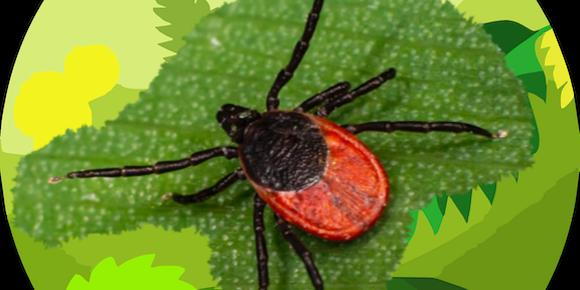
There is a systemic infection circulating in our region of the county, one so common it has nearly reached epidemic proportions. It has been spreading across the United States for nearly 50 years, yet standard medicine still seems unable to adequately treat it. This condition is often misdiagnosed, undertreated, or mistakenly declared “cured,” when in fact it continues to plague the patient with symptoms which appear periodically or continue sub-clinically for years or even a lifetime.
The condition is called Lyme disease. (Yes, I said Lyme there is no “s” at the end of the name. It is not “Lymes” disease, as some say.) The condition is actually named after the town in which it was first identified: Lyme, Connecticut.
Lyme disease is actually the fastest growing insect-borne infection in the United States today. One of the biggest challenges for doctors and patients is that the condition presents in many different ways. It is known as “the great imitator,” because it can present with symptoms that mimic other ailments, such as fibromyalgia or chronic fatigue syndrome. This is often why the condition is misdiagnosed for years. However, one symptom that is typically unique to Lyme disease is migrating pain that frequently changes location in the body.
Unfortunately, over time, Lyme disease can spread throughout the body, where it can ultimately affect the central nervous system (infecting the brain and spinal cord).
IT GETS WORSE, BUT THERE IS HOPE
Another fact about Lyme disease, which until recently was not routinely tested for, is that the bacterial load inoculated into the host by the tick in most instances is not just a sole form of bacteria (Borrelia burgdorferi) but also other bacterial coinfections including Bartonella or Babesia. In short, ticks are now spreading other conditions, some more serious than Lyme.
Antibiotics can be an effective intervention in the acute stages of a Lyme disease infection. However, they are significantly less effective once the infection becomes chronic. At that stage, if they are used for a prolonged period of time, they can negatively impact the gut microbiome and immune system in treating a chronic Lyme infection.
Conventional medicine, marred by disagreement and controversy, offers few testing and treatment options for those who suffer with what the Center for Disease Control prefers to call, "Post Treatment Lyme Disease. (PTLD)” This can leave patients feeling as if there is no hope. However, for an infection that has become what I call “chronic,” there are many forms of treatment in functional medicine that are effective in reducing symptoms and suppressing the infection. These include supporting specific body functions and systems such as mitochondrial and immune cell function as well as cell membrane signaling, and reducing systemic inflammation.
PREVENTION FIRST
Of course, prevention is the best form of intervention. Some preventative measures that you can employ include:
- Wear light-colored, long-sleeved shirts and pants (on which ticks can more easily be seen).
- Tuck your pant legs into your socks.
- After retuning indoors, remove all of your clothing and place them in the dryer on high heat for one hour. This will kill any ticks that are still on your clothing.
- Shower once you return indoors. This is an important measure to reduce the potential of infection, because this will help to prevent ticks from attaching to your skin.
- Inspect your body for foreign dots. Ticks are tiny, so they can be easy to miss. If you find one attached, do not squeeze, burn, smother, or fool with it in any way. It will not back out once attached until it is done feeding. Just grasp the tick as close to the skin as possible with tweezers, and pull it out with even pressure. Flush the tick and wash your hands and the bite location.
- Contact your doctor or clinic immediately if a bulls-eye rash appears around the place on your body where a tick was previously attached. This is the time when an adequate course of antibiotics should be used.
Another, often overlooked measure to reduce infection is to make sure that you check your pets for ticks, particularly if they have been romping in tall grass. Often times ticks will latch onto your pet’s underbellies and be tracked into the house in that way.
All that said, honestly, one of the most important things that you can do is to see that you maintain a healthy lifestyle including a healthy diet. This will aid your body’s ability to fight off infections that you may encounter. For example, research is beginning to show a connection between the PTLD and the gut microbiome I written about in the past. Eating enough protein and consuming a colorful array of fruits and vegetables is helpful in supporting your body’s immune function as well.
To learn more about testing, for not only Lyme disease but the coinfections that often accompany a Lyme infection, call the Center for Nutrition and Wellness. If you feel that you may have been suffering from a longterm infection, there may be specific nutritional supplements and lifestyle modifications that would be helpful as well.
I trust that this information was helpful. I look forward to introducing you to the new and innovative additions to the Center in the coming months.
